#marine electric motors
Text
Electric Boat Motors: Navigating the Future of Marine Propulsion
As we sail into the future, the marine industry is experiencing a paradigm shift. The key player in this transformation? Electric boat motors. These motors are not just a trend, they are the future of marine propulsion.
The Rise of Electric Boat Motors
Over the last ten years, there has been a noticeable rise in the popularity of electric boat motors due to a worldwide emphasis on sustainability and effectiveness. Electric boat motors offer a clean, quiet, and efficient alternative to traditional combustion engines. They are free from emissions, making them an ideal choice for the environmentally conscious boater.
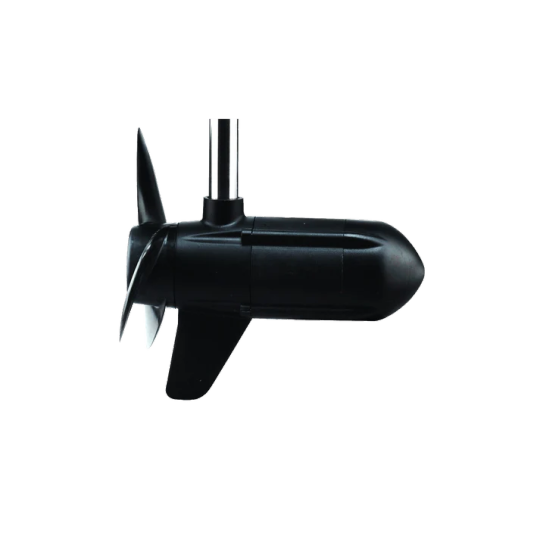
EMPPL: Pioneering the Electric Revolution
EMPPL, established in 1989, is a pioneering Australian company at the forefront of the electric motor revolution. Specializing in DC motors, we have played a crucial role in promoting the use of electric boat motors. Our dedication to innovation and sustainability has earned us a prominent position as an industry leader.
Understanding Customer Needs
At EMPPL, we prioritize understanding the unique needs of our customers. We take great pride in building lasting relationships with our clients. Our team of experts works closely with each client to provide them with electric motor solutions that are not just innovative and sustainable, but also deliver on quality and performance.
The EMPPL Advantage
Our electric boat motors are engineered using the most advanced technology to guarantee maximum efficiency and long-lasting durability. They are easy to install, require minimal maintenance, and provide a smooth and silent ride, enhancing the overall boating experience.
Sustainability and Efficiency
One of the key advantages of electric boat motors is their contribution to sustainability. Selecting electric power reduces your carbon footprint and supports a more sustainable environment. Additionally, electric boat motors are highly efficient, resulting in considerable long-term savings on fuel expenses.
A Look into the Future
As we look ahead, the potential for electric boat motors is immense. As battery technology and power management systems continue to advance, we can anticipate increased efficiency and power in these motors. The future holds exciting possibilities for electric marine propulsion, and EMPPL is committed to being at the forefront of this revolution.
Conclusion
The future of marine propulsion is here, and it’s electric. With EMPPL’s electric boat motors, you can navigate the future with confidence, knowing you’re making a sustainable choice that delivers on performance and quality. Join us as we sail into a cleaner, greener future.
0 notes
Link
#Car Battery#Caravan Battery#Deep Cycle Battery#Motor Bike Battery#Marine/ Boat Battery#Auto Electrician#Auto Electrical#Batteries Cost
1 note
·
View note
Text
Adamsllc - Devasa+ (3)
For a reliable and durable product, Adams International is the perfect option. Its engines offer products that guarantee quality and performance. With over 80 years of experience in industrial motor production, CSM MOTORI is one of the most reliable brands in the world today. They offer a wide range of products including marine, industrial and agricultural engines. MARELLI MOTORI is another well-known brand in the motor industry. Its products are known for their innovative designs and high quality materials. They specialize in manufacturing motors for a variety of applications including air compressors, electric vehicles, small machinery and more. MARELLI MOTORI is a leader in the engine industry with over 60 years of experience. HIGEN MOTOR is a reliable and energy efficient motor for any application. Their products are designed to provide maximum efficiency and performance while still being cost effective. The motors have advanced features such as quiet operation and long life expectancy. It's the perfect choice for those who need a reliable and efficient engine that won't break the bank. Whatever your needs, our company offers you reliable and cost-effective solutions. With their long history in the industry, you can be sure that every engine is designed to last and meet all your requirements.
2K notes
·
View notes
Text
15 Inventors Who Were Killed By Their Own Inventions
Marie Curie - Marie Curie, popularly known as Madame Curie, invented the process to isolate radium after co-discovering the radioactive elements radium and polonium. She died of aplastic anemia as a result of prolonged exposure to ionizing radiation emanating from her research materials. The dangers of radiation were not well understood at the time.
William Nelson - a General Electric employee, invented a new way to motorize bicycles. He then fell off his prototype bike during a test run and died.
William Bullock - he invented the web rotary printing press. Several years after its invention, his foot was crushed during the installation of the new machine in Philadelphia. The crushed foot developed gangrene and Bullock died during the amputation.
Horace Lawson Hunley - he was a marine engineer and was the inventor of the first war submarine. During a routine test, Hunley, along with a 7-member crew, sunk to death in a previously damaged submarine H. L. Hunley (named after Hunley’s death) on October 15, 1963.
Francis Edgar Stanley - Francis crashed into a woodpile while driving a Stanley Steamer. It was a steam engine-based car developed by Stanley Motor Carriage Company, founded by Francis E. Stanley and his twin Freelan O. Stanley.
Thomas Andrews - he was an Irish businessman and shipbuilder. As the naval architect in charge of the plans for the ocean liner RMS Titanic, he was travelling on board that vessel during her maiden voyage when the ship hit an iceberg on 14 April 1912. He perished along with more than 1,500 others. His body was never recovered.
Thomas Midgley Jr. - he was an American engineer and chemist who contracted polio at age 51, leaving him severely disabled. He devised an elaborate system of ropes and pulleys to help others lift him from the bed. He was accidentally entangled in the ropes of the device and died of strangulation at the age of 55.
Alexander Bogdanov - he was a Russian physician and philosopher who was one of the first people to experiment with blood transfusion. He died when he used the blood of malaria and TB victim on himself.
Michael Dacre - died after testing his flying taxi device designed to permit fast, affordable travel between regional cities.
Max Valier - invented liquid-fuelled rocket engines as a member of the 1920s German rocket society. On May 17, 1930, an alcohol-fuelled engine exploded on his test bench in Berlin that killed him instantly.
Mike Hughes - was killed when the parachute failed to deploy during a crash landing while piloting his homemade steam-powered rocket.
Harry K. Daghlian Jr. and Louis Slotin - The two physicists were running experiments on plutonium for The Manhattan Project, and both died due to lethal doses of radiation a year apart (1945 and 1946, respectively).
Karel Soucek - The professional stuntman developed a shock-absorbent barrel in which he would go over the Niagara Falls. He did so successfully, but when performing a similar stunt in the Astrodome, the barrel was released too early and Soucek plummeted 180 feet, hitting the rim of the water tank designed to cushion the blow.
Hammad al-Jawhari - he was a prominent scholar in early 11th century Iraq and he was also sort of an inventor, who was particularly obsessed with flight. He strapped on a pair of wooden wings with feathers stuck on them and tried to impress the local Imam. He jumped off from the roof of a mosque and consequently died.
Jean-Francoise Pilatre de Rozier - Rozier was a French teacher who taught chemistry and physics. He was also a pioneer of aviation, having made the first manned free balloon flight in 1783. He died when his balloon crashed near Wimereux in the Pas-de-Calais during an attempt to fly across the English Channel. Pilâtre de Rozier was the first known fatalities in an air crash when his Roziere balloon crashed on June 15, 1785.
48 notes
·
View notes
Text
AFU Motorbike Battalions/Kurins
(based on real life Soviet formations during WW2)
youtube
(Inspired by Battle Order's video on Soviet Army motorcycle reconnaisance battalions under division during the Second World War as well as the real life US armored recon units of the same period)
IMU of stories the success of ad-hoc bicycle and motorbike formations in the Armed Forces of Ukraine during the Russian invasion would result in the formation of motorcycle formations of battalion size (called in Ukrainian as Mototsykletnyy batalʹyon) in elements of the armed forces to regularize these. However they follow a Westernized form of the organization of the old Soviet motorbike battalions of mechanized and armored divisions. In cavalry divisions - those armored divisions with cavalry traditions and titles honoring the Ukrainian Cossacks - these units are titled as Kurins (Mototsykletnyy kurin) with its companies named as sotnias. These battalions are armed with primarily Western and locally produced motorcycles and tricycles for their mission as support to recon and combat operations. There's plans to integrate an infantry company to those battalions in the infantry divisions.

In mechanized infantry, assault infantry and mountain infantry divisions they are organized in 4 motorbike companies each with HQ platoon, 4 motorbike platoons (one squad each manned with electric motorcycles), and a mortar and weapons section each. The armored recon company operates M59s and M113s together with the M106 SP mortar and its light tank battalion uses M10 Bookers in its tank platoons and MT-LBs in its infantry and AT platoon. The AT battery uses Jeeps and similar vehicles for the transport of their crew and they are all supported by a forward support company from their parent division and other elements. In a mountain infantry division, an additional squad is tasked within platoons for ski capability.

In a motorized infantry division the motorbike company has no weapons section. The armored recon company is armed with BTR-4s and hand-me-down LAV-3s from the United States and the light tank company uses the M113 and Scorpion.

There's a different TO&E for the battalions in armored divisions. Motorbike battalions in these, alongside the weapons section, are reinforced with two bicycle platoons and a RPG/AT motorcycle section in the motorcycle companies, the armored recon company uses Bradleys, the light tank company, aside from its M10s, uses M113s as mechanized infantry element and there's a assault gun company using Centauros from Italy and the Ukrainian produced MT-LB-12 - inspired by the assault gun troops of cavalry recon squadrons of the United States during the Second World War.

The Motorcycle Kurin of the UGF cavalry division is modeled after the armored division motorcycle battalion but is named and organized in keeping with Ukrainian Cossack cavalry heritage. However it does not have a bicycle nor RPG/AT motorbike section and its AT battery is organized into 4 platoons instead of 3.

In the AAFU's two airmobile divisions, the motorcycle battalion's recon company is armed with M113s and BTR-3s, there's no infantry platoon in the tank company and an airborne transport and rigger platoon for parachute and air assault operations is added to the forward support company.

The two marine divisions of XXX Amphibious Corps UkrMC and the planned motorbike battalions of that Corps in Mykolaiv and Kherson are organized for both ground and amphibious operations as relfected in the addition of an amphious scout platoon. However it does have an added water transport platoon in the forward logistics company for the amphibious element there and the tank company uses M59 Scorpion TDs, AMX-10 RCs and AAVP-7s. Squads using electric bikes are to be transported to the shore via other vehicles in amphibious operations before they can be unloaded for use unlike those using normal motorbikes (and those squads using bicycles) which can land to the coast via landing craft. The same vehicles in an air assault motorbike battalion's armored recon company are used in a marine motorbike battalion.
@lukeexplorer
#ukraine au#ukraine war au#orbat boys#order of battle#fantasy orbat#fictional orbat#stand with ukraine
3 notes
·
View notes
Text
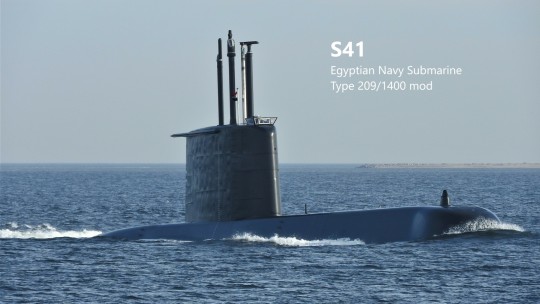
S 41 is the first of four Type 209/1400mod submarines built by ThyssenKrupp Marine Systems in Kiel/Germany for the Egyptian Navy.
Name: S 41
Pennant number: 861
Laid down: March 2012
Launched: December 2015
Commissioned: April 2017
Builder: ThyssenKrupp Marine Systems (TKMS), Kiel, Germany
Displacement: 1450 tons (surfaced) / 1600 tons (submerged)
Length: 62 meters / 203 feet 5 inches
Beam: 6.2 m / 20 feet 4 inches pressure hull diameter
Speed: 11 knots surfaced / 22 knots submerged
Range, surfaced: 11000 NMI at 10 knots
Range, snorkel: 8000 NMI at 10 knots
Range, submerged: 400 NMI at 4 knots
Dive depth: 250 meters / 820 feet max.
Complement: 30
Propulsion:
(Diesel Electric)
4 x MTU 12V396 SE84 diesel generators (3700 kW / 5000 shp)
4 x 120-cell batteries
1 x electric motor
1 shaft, 1 propeller
Armament:
8 x 21-inches / 533 mm bow torpedo tubes
for up to
14 x DM2A4 heavy weight torpedoes
and/or
UGM-84L Harpoon Block II SSM missiles
4 notes
·
View notes
Text
15 Inventors Who Were Killed By Their Own Inventions
Marie Curie - Marie Curie, popularly known as Madame Curie, invented the process to isolate radium after co-discovering the radioactive elements radium and polonium. She died of aplastic anemia as a result of prolonged exposure to ionizing radiation emanating from her research materials. The dangers of radiation were not well understood at the time.
William Nelson - a General Electric employee, invented a new way to motorize bicycles. He then fell off his prototype bike during a test run and died.
William Bullock - he invented the web rotary printing press. Several years after its invention, his foot was crushed during the installation of the new machine in Philadelphia. The crushed foot developed gangrene and Bullock died during the amputation.
Horace Lawson Hunley - he was a marine engineer and was the inventor of the first war submarine. During a routine test, Hunley, along with a 7-member crew, sunk to death in a previously damaged submarine H. L. Hunley (named after Hunley’s death) on October 15, 1963.
Francis Edgar Stanley - Francis crashed into a woodpile while driving a Stanley Steamer. It was a steam engine-based car developed by Stanley Motor Carriage Company, founded by Francis E. Stanley and his twin Freelan O. Stanley.
Thomas Andrews - he was an Irish businessman and shipbuilder. As the naval architect in charge of the plans for the ocean liner RMS Titanic, he was travelling on board that vessel during her maiden voyage when the ship hit an iceberg on 14 April 1912. He perished along with more than 1,500 others. His body was never recovered.
Thomas Midgley Jr. - he was an American engineer and chemist who contracted polio at age 51, leaving him severely disabled. He devised an elaborate system of ropes and pulleys to help others lift him from the bed. He was accidentally entangled in the ropes of the device and died of strangulation at the age of 55.
Alexander Bogdanov - he was a Russian physician and philosopher who was one of the first people to experiment with blood transfusion. He died when he used the blood of malaria and TB victim on himself.
Michael Dacre - died after testing his flying taxi device designed to permit fast, affordable travel between regional cities.
Max Valier - invented liquid-fuelled rocket engines as a member of the 1920s German rocket society. On May 17, 1930, an alcohol-fuelled engine exploded on his test bench in Berlin that killed him instantly.
Mike Hughes - was killed when the parachute failed to deploy during a crash landing while piloting his homemade steam-powered rocket.
Harry K. Daghlian Jr. and Louis Slotin - The two physicists were running experiments on plutonium for The Manhattan Project, and both died due to lethal doses of radiation a year apart (1945 and 1946, respectively).
Karel Soucek - The professional stuntman developed a shock-absorbent barrel in which he would go over the Niagara Falls. He did so successfully, but when performing a similar stunt in the Astrodome, the barrel was released too early and Soucek plummeted 180 feet, hitting the rim of the water tank designed to cushion the blow.
Hammad al-Jawhari - he was a prominent scholar in early 11th century Iraq and he was also sort of an inventor, who was particularly obsessed with flight. He strapped on a pair of wooden wings with feathers stuck on them and tried to impress the local Imam. He jumped off from the roof of a mosque and consequently died.
Jean-Francoise Pilatre de Rozier - Rozier was a French teacher who taught chemistry and physics. He was also a pioneer of aviation, having made the first manned free balloon flight in 1783. He died when his balloon crashed near Wimereux in the Pas-de-Calais during an attempt to fly across the English Channel. Pilâtre de Rozier was the first known fatalities in an air crash when his Roziere balloon crashed on June 15, 1785.
15 notes
·
View notes
Text
Invictus provides the best service for equipment rental in the UAE for the oil and gas, marine, power, and construction industries. Our rental fleet covers a wide range of light and heavy equipment, catering to your needs and requirements. With over a decade of experience, we have established ourselves as a reliable partner for our clients’ energy needs, providing top-quality equipment and services.
The main backbone of any energy project are generators and power plants, and we offer a wide range of options to suit your specific needs. Whether you require a small generator for backup power or a large power plant for your operations, we’ve got you covered. Our generators are efficient, reliable, and easy to operate, ensuring an uninterrupted power supply for your operations.
Diesel tanks are essential for storing and transporting fuel, and we offer a range of options to suit your needs. Our diesel tanks are built to last, ensuring the safe and efficient storage of fuel for your operations.
Load banks and transformers are critical components for the testing and commissioning of electrical systems. We offer a range of load banks and transformers that are built to the highest standards, ensuring accurate and reliable testing of your electrical systems.
Portable air compressors are essential for a range of applications, from powering pneumatic tools to providing compressed air for equipment. Our air compressors are built to last, ensuring reliable and efficient operation for your operations.
Mobile tower lights are essential for providing illumination in remote locations, and we offer a range of options to suit your needs. Our tower lights are portable, easy to operate, and built to withstand harsh environments, ensuring reliable lighting for your operations.
High-pressure triplex pumps are essential for a range of applications, from well drilling to pressure testing. Our triplex pumps are built to the highest standards, ensuring reliable and efficient operation for your operations.
Cementing units are essential for the oil and gas industry, and we offer a range of truck and skid-mounted options to suit your needs. Centrifugal pumps are essential for a range of applications, from water transfer to chemical processing. Our centrifugal pumps are available in engine and motor-driven options, ensuring reliable and efficient operation for your operations.
Reverse osmosis plants and storage tanks are essential for the oil and gas industry, and we offer a range of options to suit your needs. Our reverse osmosis plants are built to the highest standards, ensuring reliable and efficient water treatment for your operations.
At Invictus Oil Field, we are committed to providing the best possible service and support to our clients. We offer a range of services, from equipment installation and commissioning to
maintenance and repair. Our team of experts is always on hand to provide technical support and advice, ensuring that your operations run efficiently.
In conclusion, Invictus Oil Field is your one-stop destination for all your energy needs. With our extensive range of products and services, we are committed to providing reliable, efficient, and cost-effective solutions for the oil and gas industry. If you are looking for industrial equipment rental in the UAE or across the world, contact us for the best deal.
Generators
Power Plants
Diesel Tanks
Load Banks & Transformers
Portable Air Compressors
Mobile Tower Lights
High Pressure Triplex Pumps
Cementing Units (Truck and Skid Mounted)
Centrifugal Pumps (Engine and Motor driven)
Reverse Osmosis Plant, Storage Tanks (Water and Acid)
2 notes
·
View notes
Text
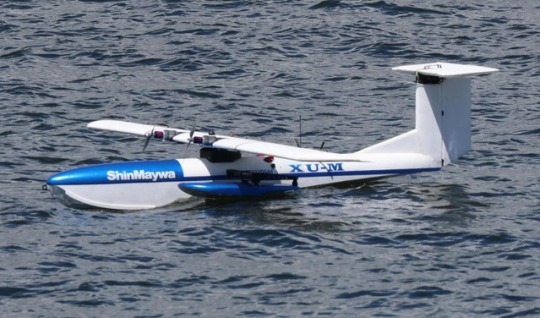
ShinMaywa announces inaugural flight of the unmanned amphibious 'XU-M' aircraft
Fernando Valduga By Fernando Valduga 09/22/2022 - 11:00am VANT - UAV
On September 5, ShinMaywa Industries of Japan announced the inaugural flight of its XU-M unmanned seaplane. The company stated that the inaugural flight took place on August 26.
The XU-M (EXperimental Unmanned - Marine type) is a unmanned aerial vehicle based on amphibious technology developed by ShinMaywa. It was developed with the objective of promoting research related to the sensing and control of remotely operated amphibious aircraft. The fixed-wing drone is driven by two electric motors and has a cruising speed of 60 km/h. The aircraft is 3m long, 4m wide and 0.9m high. The aircraft built with carbon fiber reinforced plastic (CFRP) has an operating weight of less than 25kg.
youtube
While the XU-M is a test aircraft, ShinMaywa will design the aircraft and provide services according to customer requirements, with the XU-M being able to form the basis for larger projects of unmanned amphibious aircraft.

ShinMaywa also developed an XU-S unmanned fixed-wing aerial vehicle, which has long-lasting flight capacity. Over the years it has been used for radio propagation tests, environmental observation and marine litter survey. This battery-powered drone is driven by two propellers in the tail.
The Japanese manufacturer ShinMaywa produces the large manned amphibious aircraft US-2, currently operated by the Japan Maritime Self-Defense Force (JMSDF). The aircraft was previously considered by the Indian Navy, for which ShinMaywa partnered with Mahindra Defence. ShinMaywa also expressed its willingness to offer US-2 for a U.S. Special Operations Command (USSOCOM) requirement for an amphibious aircraft.

JASMF ShinMaywa US-2 amphibious aircraft.
XU-M combines the technologies used in US-2 and XU-S. On September 2, the XU-M was presented during the "1st Drone Summit" held in the city of Kobe. The drone took off from the water and performed a four-minute flight demonstration. The XU-M made two automatic curves in eight before landing on the water.
Tags: amphibious aircraftDronesShinMaywa US-2
Previous news
Development of CRAIC CR2929 still continues, but should not take off by 2030
Next news
Spirit AeroSystems will provide horizontal stabilizers to keep the KC-135 in flight in the USAF until 2040
Fernando Valduga
Fernando Valduga
Aviation photographer and pilot since 1992, he has participated in several events and air operations, such as Cruzex, AirVenture, Dayton Airshow and FIDAE. It has works published in specialized aviation magazines in Brazil and abroad. He uses Canon equipment during his photographic work in the world of aviation.
Related news
BRAZIL
Embraer announces investment in XMobots, the largest drone company in Latin America
09/20/2022 - 10:31
MILITARY
Lockheed invests $100 million in its loyal wingman Speed Racer project
09/18/2022 - 11:00
MILITARY
Lithuania is acquiring $36 million in UAVs, including Switchblade drones
09/16/2022 - 08:07
COMMERCIAL
VIDEO: China's second amphibious AG600M 'Kunlong' aircraft completes the inaugural flight
09/14/2022 - 10:00
MILITARY
Iranian attack drone is shot down over Ukraine
14/09/2022 - 08:39
MILITARY
Taiwan confirms purchase of MQ-9 SeaGuardians
05/09/2022 - 14:00
homeMain PageEditorialsINFORMATIONeventsCooperateSpecialitiesadvertiseabout
Cavok Brazil - Digital Tchê Web Creation
Commercial
Executive
Helicopters
HISTORY
Military
Brazilian Air Force
Space
Specialities
Cavok Brazil - Digital Tchê Web Creation
2 notes
·
View notes
Text
The Aluminum Slug Market: Trends, Drivers, and Future Prospects
The aluminum slug market plays a pivotal role in the broader aluminum industry, supplying critical components for a diverse array of end-use applications. These small, cylindrical pieces of aluminum are essential in the manufacturing of various products, ranging from aerosol cans to automotive components. This article delves into the current trends, key drivers, challenges, and future prospects of the aluminum slug market.
Sample Report: https://www.econmarketresearch.com/request-sample/EMR0075/
Market Overview
Aluminum slugs are intermediate products in the aluminum processing chain, produced primarily through the extrusion process. They are further processed into end products by means of impact extrusion, a technique that involves forcing the slug into a mold at high pressure to create hollow shapes. This method is particularly valued for its ability to produce lightweight, durable, and corrosion-resistant items.
Key Applications
The aluminum slug market caters to several significant sectors:
Packaging Industry: One of the largest consumers of aluminum slugs is the packaging industry, especially for producing aerosol cans and beverage containers. The demand for convenient, lightweight, and recyclable packaging solutions has driven the growth in this sector.
Automotive Industry: Aluminum slugs are used to manufacture various automotive components such as shock absorber tubes, airbag inflators, and engine parts. The automotive industry's shift towards lightweight materials to enhance fuel efficiency and reduce emissions has bolstered the demand for aluminum slugs.
Pharmaceutical and Cosmetic Industries: The demand for aluminum tubes in the pharmaceutical and cosmetic industries has been robust, as these sectors require packaging that ensures product safety, hygiene, and extended shelf life.
Electrical and Electronics Industry: Aluminum’s excellent conductivity and lightweight properties make slugs valuable for producing electrical components and housings for electronic devices.
Gate Full Information: https://www.econmarketresearch.com/industry-report/aluminum-slug-market/
Other Reports:
SOC Containers Market Growth
HVAC Chillers Market Size
Aluminum Slug Market
Digital Brain Health Market Analysis
Cognitive Robotics Market Trends
Industrial IoT Display Market Share
Edible Offal Market Application
Potato and Yam Derivatives Market
Surgical Booms Market Overview
Marine Application Market Opportunities
Wind Power Parks Market Revenue
Fuel Cells In Aerospace And Defense Market
Floor Adhesive Market Sales
Pet Fitness Care Market Technology
Axial Flux Motor Market Drivers
Audio and Video Equipment Market Types
Self Stabilizing Spoon Market Challenges
Solar Backsheet Films Market Outlook
Marine Sensors Market Analysis
Dry Shipping Container Market Segmentation
Blood Stream Infection Testing Market Size
Ethyl Vanillin Market Growth
Prebiotic Fiber Market Future
Solar Watch Market Trends
Industrial and Commercial Floor Scrubbers Market Analysis
Electro-Mechanical Brake Market Share
Fiber-Reinforced Plastics Recycling Market Segmentation
Closed Cell Foam Market Drivers
Perfume Ingredient Chemicals Market Technology
Bucket Wheel Excavator Market Revenue
Female Fragrance Market Sales
Yard Crane Market Outlook
0 notes
Text
Unleashing Efficiency: Exploring EOT Cranes by Hercules Hoist
In the bustling world of industrial operations, where heavy lifting is a daily necessity, EOT (Electric Overhead Traveling) cranes stand tall as indispensable workhorses. Among the myriad of manufacturers offering lifting solutions, Hercules Hoist has carved a niche for itself with its innovative and reliable EOT crane systems. In this blog, we'll delve into the realm of EOT cranes by Hercules Hoist, exploring their features, benefits, applications, and why they are the preferred choice for businesses across industries.
Understanding EOT Cranes:
What are EOT Cranes?
Electric Overhead Traveling (EOT) cranes, also known as bridge cranes, are versatile lifting systems used for transporting and positioning heavy loads within industrial environments. Unlike traditional cranes that rely on manual operation or hydraulic mechanisms, EOT cranes are powered by electric motors, offering precise control and efficiency in handling various materials.
How Do EOT Cranes Work?
EOT cranes operate along a runway system, typically mounted on elevated beams within a facility. They consist of a bridge that traverses horizontally along the length of the runway, supported by end trucks equipped with wheels. The lifting mechanism, comprising a hoist and trolley, moves vertically and horizontally to lift and transport loads with precision. Operators control the crane's movements using a pendant control station or a wireless remote, ensuring smooth and safe operation.
Features and Benefits of Hercules Hoist EOT Cranes:
1. Robust Construction:
Hercules Hoist EOT cranes are engineered for durability and reliability, with sturdy steel structures and high-quality components. The robust construction ensures long-term performance even in demanding industrial environments, minimizing downtime and maintenance costs.
2. Customized Solutions:
Recognizing that each industry and application has unique lifting requirements, Hercules Hoist offers customized EOT crane solutions tailored to specific needs. Whether it's varying load capacities, span lengths, or lifting heights, their engineering expertise enables them to design bespoke solutions that maximize efficiency and productivity.
3. Advanced Technology:
Hercules Hoist integrates advanced technology into their EOT cranes to enhance performance and safety. Features such as frequency-controlled drives, precision load monitoring systems, and collision avoidance sensors optimize operations, improve energy efficiency, and mitigate the risk of accidents.
4. Compliance with Standards:
Compliance with industry standards and regulations is a hallmark of Hercules Hoist EOT cranes. Their products adhere to stringent safety and quality standards, including IS 3177 for EOT cranes in India and international standards such as FEM and CMAA, ensuring peace of mind for customers regarding safety and reliability.
5. Comprehensive Support:
From initial consultation and design to installation, training, and after-sales service, Hercules Hoist provides comprehensive support throughout the lifecycle of their EOT crane systems. Their dedicated team of engineers and technicians ensures seamless integration, optimal performance, and prompt resolution of any issues that may arise.
Applications of Hercules Hoist EOT Cranes:
Hercules Hoist EOT cranes find versatile applications across a wide range of industries, including:
Manufacturing: for handling raw materials, finished products, and heavy machinery in production facilities.
Warehousing and Logistics: for efficient material handling, loading and unloading of goods, and pallet storage in warehouses and distribution centers.
Construction: for lifting and positioning materials, equipment, and prefabricated components at construction sites.
Ports and Shipbuilding: for loading and unloading cargo ships, transporting containers, and shipbuilding activities in marine environments.
Automotive: for assembly line operations, lifting of vehicle components, and maintenance tasks in automotive manufacturing plants.
Conclusion:
Hercules Hoist EOT cranes exemplify excellence in lifting technology, combining robust construction, advanced features, and customized solutions to meet the diverse needs of industrial applications. With their unwavering commitment to quality, safety, and customer satisfaction, Hercules Hoist continues to be a trusted partner for businesses seeking reliable lifting solutions that drive efficiency, productivity, and success.
0 notes
Text
The Rise of Electric Boat Motors in Sustainable Marine Propulsion
The marine industry is witnessing a significant shift towards sustainability, with the rise of electric boat motors playing a pivotal role. As we strive to reduce our carbon footprint and embrace greener alternatives, the adoption of electric boat motors is gaining momentum.
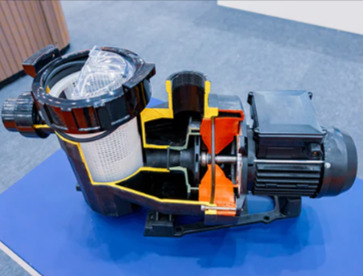
Electric boat motors, such as those offered by Electric Motor Power, are revolutionizing the marine industry. They offer a sustainable solution for marine propulsion, providing a host of benefits that traditional combustion engines simply can’t match.
Why Choose an Electric Boat Motor?
Electric boat motors are known for their quiet operation and lack of harmful emissions, making them an environmentally friendly option. By using an electric boat, you can navigate the waters without leaving a carbon footprint. Although the initial cost may be higher, electric boats can lead to long-term savings by eliminating the need for expensive fuel used in traditional gasoline engines.
According to market predictions, the electric boat sector is expected to experience significant growth in the coming years, estimated to increase from $3.3 billion to $19 billion between 2023 and 2032. This trend reflects a growing consumer preference for eco-friendly alternatives that not only benefit the planet but also offer financial advantages.
Advantages of Electric Boat Motors
Electric boat motors are gaining popularity in the maritime industry due to their numerous advantages over traditional boats. One of the key advantages of these motors is their positive influence on water ecosystems. Due to their lack of pollutants, they are essential in maintaining the delicate equilibrium of aquatic environments and preventing harm to marine life.
Additionally, using electric boats allows for a more enjoyable boating experience with no compromise on air quality. These boats emit zero emissions, providing a cleaner and more refreshing atmosphere without the unpleasant smell of fuel. This not only adds a touch of luxury to boating but also contributes to promoting cleaner practices on the water.
Boaters are now recognizing the importance of sustainable practices and are increasingly choosing electric boat motors. The silent operation allows for a more enjoyable experience on the water, enhancing the connection with nature.
Moreover, the maintenance of electric boat motors is significantly less demanding compared to their gasoline counterparts. The absence of oil changes and tune-ups, coupled with the longevity of electric motors, further adds to their appeal.
The rise of electric boat motors is a testament to our collective effort towards a sustainable future. As we continue to advance and enhance these technologies, we are getting closer to a future where our enjoyment of the world's waterways will have no negative impact.
Bottom Line
The increasing adoption of electric boat motors is not merely a fad, but a significant step towards promoting environmentally-friendly marine propulsion. This transition benefits both the ecosystem and boaters globally, making it a win-win situation. The future of boating is undeniably electric and will continue to be so.
0 notes
Text
Global Top 24 Companies Accounted for 44% of total Floating Dock Systems market (QYResearch, 2021)
A floating dock, floating pier or floating jetty is a platform or ramp supported by pontoons. It is usually joined to the shore with a gangway. The pier is usually held in place by vertical poles referred to as pilings, which are embedded in the seafloor or by anchored cables.
Frequently used in marinas, this type of pier maintains a fixed vertical relationship to watercraft secured to it, independent of tidal, river or lake elevation.

According to the new market research report “Global Floating Dock Systems Market Report 2023-2029”, published by QYResearch, the global Floating Dock Systems market size is projected to reach USD 0.37 billion by 2029, at a CAGR of 3.5% during the forecast period.
Figure. Global Floating Dock Systems Market Size (US$ Million), 2018-2029

Figure. Global Floating Dock Systems Top 24 Players Ranking and Market Share(Based on data of 2021, Continually updated)

The global key manufacturers of Floating Dock Systems include Bellingham Marine, Meeco Sullivan, Marinetek, SF Marina Systems, Ingemar, Poralu Marine, Walcon Marine, Flotation Systems, Maricorp, EZ Dock, etc. In 2021, the global top five players had a share approximately 44.0% in terms of revenue.
About QYResearch
QYResearch founded in California, USA in 2007.It is a leading global market research and consulting company. With over 16 years’ experience and professional research team in various cities over the world QY Research focuses on management consulting, database and seminar services, IPO consulting, industry chain research and customized research to help our clients in providing non-linear revenue model and make them successful. We are globally recognized for our expansive portfolio of services, good corporate citizenship, and our strong commitment to sustainability. Up to now, we have cooperated with more than 60,000 clients across five continents. Let’s work closely with you and build a bold and better future.
QYResearch is a world-renowned large-scale consulting company. The industry covers various high-tech industry chain market segments, spanning the semiconductor industry chain (semiconductor equipment and parts, semiconductor materials, ICs, Foundry, packaging and testing, discrete devices, sensors, optoelectronic devices), photovoltaic industry chain (equipment, cells, modules, auxiliary material brackets, inverters, power station terminals), new energy automobile industry chain (batteries and materials, auto parts, batteries, motors, electronic control, automotive semiconductors, etc.), communication industry chain (communication system equipment, terminal equipment, electronic components, RF front-end, optical modules, 4G/5G/6G, broadband, IoT, digital economy, AI), advanced materials industry Chain (metal materials, polymer materials, ceramic materials, nano materials, etc.), machinery manufacturing industry chain (CNC machine tools, construction machinery, electrical machinery, 3C automation, industrial robots, lasers, industrial control, drones), food, beverages and pharmaceuticals, medical equipment, agriculture, etc.
For more information, please contact the following e-mail address:
Email: [email protected]
Website: https://www.qyresearch.com
0 notes
Text
Revealing Strength: A Close Look at Excavator Motors
Excavators are key in today's construction and mining jobs, and their engines are their source of strength. These engines, built for tough situations yet focused on best performance, impact the effectiveness of any digging task. In this blog, we will take a closer look at the ins and outs of excavator engines, their main parts, how they work, and what new ideas are pushing them forward.
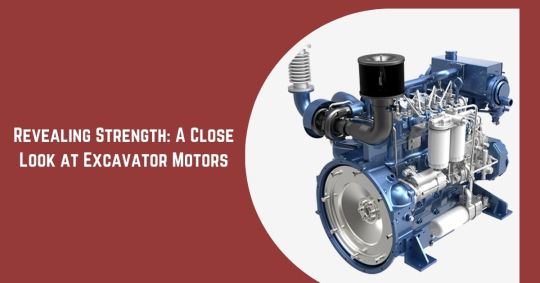
Grasping Excavator Engines
The engines used in excavators are not your typical motors. They are custom-made to handle digging jobs. With options like diesel, gas, and electric, there is an ideal fit for every situation and location.
Diesel Machines: Diesel machines rule the world of diggers because they are strong, save fuel, and generate a lot of power. They work on a system where the heat of squeezed air in the tube lights the fuel. This setup offers peak results in tough fields and while carrying big weights, making diesel diggers favored for big tasks like mining and building large-scale.
Electric Diggers: The construction world is seeing more and more electric digger engines. Why? They are eco-friendly and lower emissions. How does it work? They run on electric motors using batteries or outside power. This can be normal electricity or green energy like sun or wind power. Yes, these electric diggers don't give off emissions and are quieter. But, they can't go far and need charging spots. So, using them away from cities or the power grid can be tricky.
Gasoline Engines: Although not as common, gasoline engines are used in lighter, smaller excavators and specific areas where fuel restrictions and emission rules give gas an edge over diesel. These engines run more smoothly and are simple to start when it's cold. However, their less powerful output and higher fuel use make them less ideal for tough digging jobs.
Essential Components and Mechanisms-
Regardless of the fuel type, all digger machinery engines consist of vital pieces and characteristics that enable optimum performance.
Cooling System: Cooling System: It's crucial to keep things on the cooler side for the engine to perform optimally, especially when it's running for extended periods carrying a hefty load. Excavator engines employ ingenious cooling systems. These consist of radiators, fans, and unique liquids that distribute the heat.
Engine: An excavator's engine and power flow form its powertrain. This system includes the engine, moving power to the transmission system. The hydraulic pumps get this power, controlling the machine. Excavators today have updated hydrostatic or hydrodynamic transmissions. These advances increase power control and efficiency, boosting on-site maneuverability and performance.
Looking After Our Planet: As we become more conscious of our environment, digger engines are using top-of-the-line tech like diesel particle filters (DPF), chosen chemical reduction (SCR), and outlet gas loop (EGR) systems. Why? To cut down on bad stuff going into our air. These nifty inventions help diggers do their work but keep our air clean, all while following the rules.
You may also like: Role Of Marine Engines In Shipping and Transport
Conclusion
The engine of a digger is like the key part of today's excavation gear. It fuels growth and new ideas in building and mining all over the globe. As tech gets better, we know digger engines will change too, starting a time of greener and better digging methods. If we use these new changes well and harness the strength of excavator engines right, we can pave the way for better infrastructure growth. At the same time, we can keep our Earth safe for our kids and grandkids.
0 notes
Text
Axial Flux Motor Market – Forecast (2023-2028)
Axial Flux Motor Market Report Overview
The Axial Flux Motor market size is forecast to reach USD 1387.7 million by 2030, after growing at a CAGR of 11.8% during the forecast period 2024-2030. Axial flux motors are suited for applications that require a high torque density in a small footprint. Axial flow drives are also known as flattened and pancake electrically commutated motors due to their extremely low axial length-to-diameter ratio. It delivers more torque and power density than radial flux motors while using the same electrical components. When an axial flux motor has this feature, the battery lasts longer, making these motors more economically viable.
Axial flux motors are being used more frequently in a variety of new industries, including electric bikes, delivery vehicles, airport pods, electric cars, and even airplanes owing to the recent technology breakthroughs and a push towards electrification. The axial flux type was the first motor to be created in history. Therefore, it is difficult to imagine that these motors have found such a wide range of applications in the past two decades. First, it was extensively utilized for storage needs in the agricultural industry and elevators. Additionally, as axial flux motors are more efficient than radial motors, the market for them is expected to create considerable profits over the course of the projection period. Compared to a radial motor, this motor's small length offers great torque over speed. Additionally, when employed in the automotive industry, its small size and low weight reduce the weight of automobiles. In 2022, North America held 34.54% market share of the axial flux motor market, and is expected to grow at a significant compounded annual growth rate of 11.9% during the forecast period (2023-2030). The region is a hub for electric vehicle (EV) manufacturing and innovation, with automakers increasingly adopting axial flux motors for their EVs. Additionally, the growing renewable energy sector, including wind power projects, contributes to the demand for these motors. Asia Pacific, led by China, is a rapidly growing market for axial flux motors, driven by its extensive manufacturing capabilities and increasing adoption of electric vehicles. With the ever-expanding adoption of electric vehicles (EVs) in the region, China has emerged as a global leader in the EV market, which in turns fuels the demand for axial flux motors to new heights.
Furthermore, using axial motors minimizes vehicle weight by reducing the amount of space occupied by machinery. Transportation corporations' growing investment in the electric vehicle market would give substantial growth opportunities for the Axial Flux Motor Market. Product demand is expected to benefit from a growing focus on refining design and manufacturing processes in order to produce better products with greater efficiency, which further enhances the industry expansion for permanent magnet synchronous motors. Rising awareness of environmental preservation around the world is predicted to boost the adoption of electric vehicles and heat recovery ventilation, which will drive axial flux motor demand in 2024-2030.
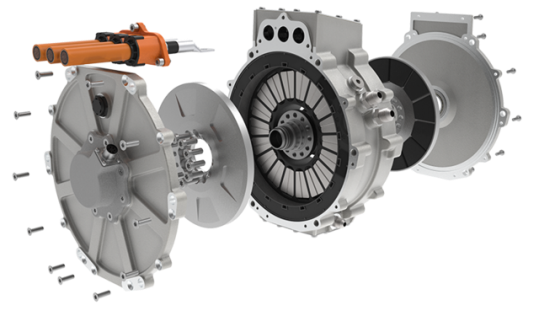
Report Coverage
The report “Axial Flux Motor Market – Forecast (2024-2030)”, by IndustryARC, covers an in-depth analysis of the following segments of the Axial Flux Motor market.
By Cooling Process: Air Cooling, Liquid Cooling.
By Power: 1kw-15kw, 15kw-80kw, 80kw-160kw, Above 160kw.
By Application: Electric Passenger Vehicles, Commercial Vehicles, Industrial Machinery, Elevators, Robotics Actuators, and Propulsion Systems, Aircrafts & Electric Glider Planes, Yachts & Electric Boats, Electric Drones, Others.
By End-User Industry: General Manufacturing, Power, Construction, Automotive, Aerospace, Marine, Agriculture, Others.
By Geography: North America, South America, Europe, APAC, and RoW.
Key Takeaways
• The Electric Passenger Vehicles segment is expected to grow at a CAGR of 12.6% during the forecast period 2024-2030 owing to the increase in government initiatives and key players strategic approaches to maintain the dominance.
• Automotive dominated the Axial Flux Motor Market with a revenue of $238.06m in 2023 and is projected to reach $477.11m by 2030 and is also set to be the fastest-growing segment with a CAGR of 10.6% during the forecast period 2024-2030. Axial flux electric motors are in high demand across a variety of vehicle industries and across numerous geographical locations, thanks to the continuously developing automotive sector.
• Europe region is dominating the Axial Flux Motor Market with revenue of $186.68 m in 2023 and is estimated to grow at a CAGR of 11.9% during the forecast period of 2024-2030 to generate a revenue of $405.55m in 2030. The government's aggressive measures for the adoption of electric vehicles have aided the sector's massive growth throughout Europe.
• The growing demand for high power density axial flux motors is enhancing the industry expansion and is set to positively impact the market growth.
1 note
·
View note
Text
Significance of Separable Insulated Connectors
Efforts to improve sustainability and environmental stewardship are driving the development of eco-friendly materials and manufacturing processes for separable insulated connectors.
Separable insulated connectors serve as vital components in electrical systems, facilitating the transmission of power and signals while ensuring safety and reliability. Unlike traditional connectors, which often require complex installation procedures and pose risks of electrical accidents, separable insulated connectors offer a more streamlined and secure solution. These connectors consist of two main components: a male plug and a female receptacle, designed to interlock seamlessly and establish a robust electrical connection.
The versatility of separable insulated connectors renders them indispensable across a spectrum of industries. In the energy sector, these connectors play a pivotal role in power distribution networks, enabling efficient transfer of electricity from generation sources to end-users. Similarly, in the automotive industry, separable insulated connectors contribute to the assembly of electric vehicles, facilitating the integration of various components such as batteries, motors, and control systems. Moreover, these connectors find applications in telecommunications, aerospace, marine, and renewable energy sectors, underscoring their adaptability and relevance in modern technological landscapes.
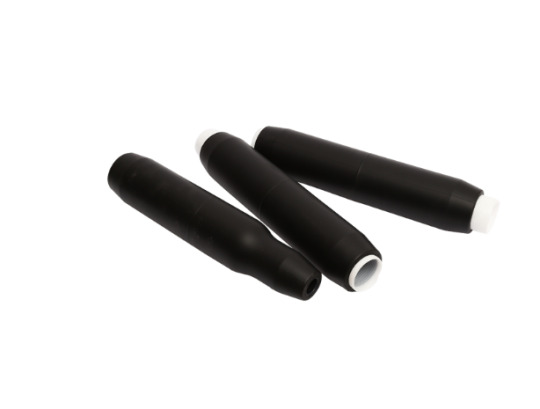
0 notes